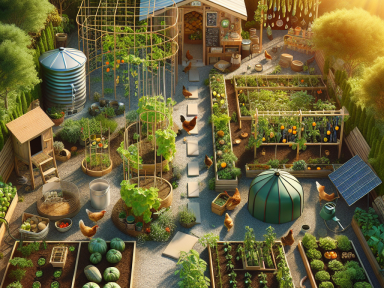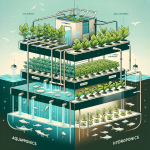The Challenge of Homesteading with Limited Land
Homesteading, the age-old practice of living self-sufficiently off one’s own land, is increasingly challenging in today’s world. With real estate prices skyrocketing and the average size of properties shrinking, you might be left wondering if it’s even possible to pursue your homesteading dreams. Is it attainable to live sustainably and self-reliantly on just a small plot of land? Let me assure you- the answer is a resounding YES.
The Importance of Strategic Planning
When homesteading with limited land, the first rule is strategic planning. You simply can’t afford to waste any space. And remember, the quality of function trumps quantity of space, every single time.
1. Analyzing Your Space
Begin with a thorough analysis of your land. Is it sunniest towards the south? Is there an area that’s constantly shady? Where does rainwater pool after a storm? Understanding your space’s natural patterns will be crucial when deciding on the optimal placement of everything from fruit trees to chicken coops.
2. Growing Up, Not Out
When space is at a premium, think vertically. Grow climbers like cucumbers and grapes on trellises, plant fruit and nut trees to create a canopy, and install hanging planters for herbs and smaller veggies. You’d be surprised how much you can produce with this approach.
The Power of Permaculture
If you’re not familiar with the term permaculture, now’s the time to get acquainted. This approach to farming involves designing systems that mimic natural ecosystems. A permaculture approach can help you make the most efficient use of your limited space.
3. Stacking Functions
In permaculture design, the idea of stacking functions is key. This means that each element of your design should serve multiple purposes. For example, a chicken can produce eggs, provide meat, create manure for compost, eat food scraps, and control pests.
4. Working With Nature
Work with, not against, nature. This means learning to understand the natural cycles and patterns of your specific location and harnessing these to your advantage.
The Role of Self-reliance
A critical piece of the puzzle when homesteading with limited land is self-reliance. Work to create systems that reduce waste and maximize resources. Collect rainwater for irrigation, compost organic waste to improve soil health, and focus on creating a holistic and sustainable homesteading lifestyle.
5. Incorporating Renewable Energy
Consider integrating renewable energy sources, such as solar panels or small wind turbines, wherever possible. Not only can these significantly decrease your carbon footprint, but they also ensure you have a reliable power source, even in times of crisis.
Homesteading With Limited Land: The Bottomline
In uncertain times, the ability to independently sustain oneself can be a crucial advantage. Even with limited land, strategic planning, permaculture principles, and a commitment to self-reliance can put you on the path towards a more sustainable, resilient future. Remember, it’s not about having a sprawling estate but making the most of what you have. Your dream of homesteading is achievable, so start planning today!




GIPHY App Key not set. Please check settings